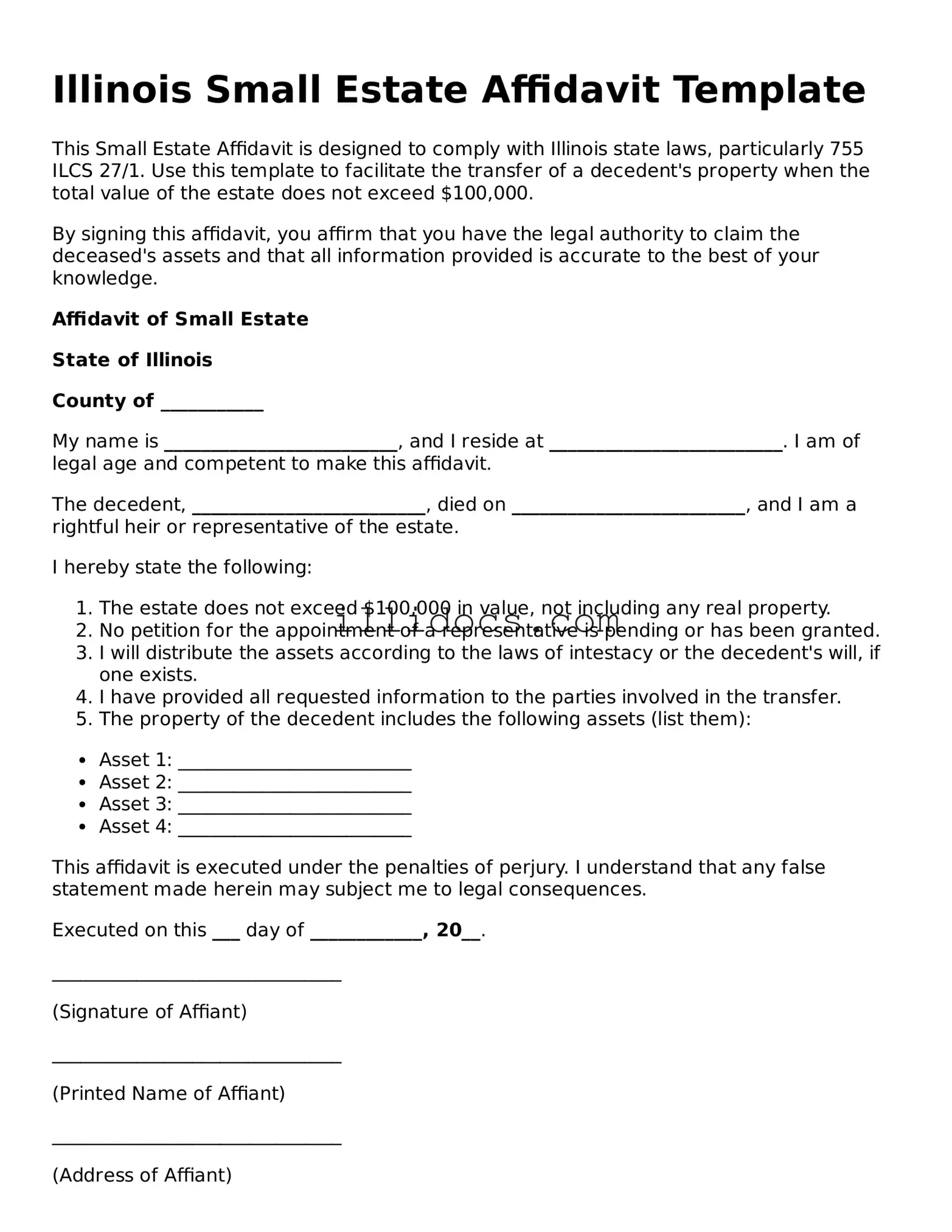What is the Illinois Small Estate Affidavit?
The Illinois Small Estate Affidavit is a legal document that allows individuals to settle the estate of a deceased person without going through the lengthy and often costly probate process. It is designed for estates with a total value below a certain threshold, making it easier for heirs to claim assets quickly.
Who is eligible to use the Small Estate Affidavit?
To use the Small Estate Affidavit, the estate must be valued at less than $100,000 (as of the latest updates). Typically, the heirs or beneficiaries of the deceased can file this affidavit, provided they are entitled to the assets under Illinois law.
What assets can be claimed using the Small Estate Affidavit?
The affidavit can be used to claim various assets, including bank accounts, personal property, and real estate. However, it does not cover certain types of property, such as those held in a trust or assets that have designated beneficiaries, like life insurance policies.
How do I complete the Small Estate Affidavit?
Completing the Small Estate Affidavit involves filling out the form with accurate information about the deceased, the heirs, and the assets involved. It's essential to provide details such as the date of death, the value of the estate, and the relationship of the affiant to the deceased. Make sure to sign the affidavit in front of a notary public.
Where do I file the Small Estate Affidavit?
The completed Small Estate Affidavit is typically filed with the local circuit court in the county where the deceased resided at the time of death. Some financial institutions may also require a copy to release funds or transfer assets.
Is there a fee to file the Small Estate Affidavit?
While there may be no direct fee for filing the Small Estate Affidavit itself, there can be court fees associated with filing documents in the circuit court. These fees vary by county, so it's wise to check with the local court for specific amounts.
How long does it take to process the Small Estate Affidavit?
The processing time can vary. Once filed, if there are no complications, the affidavit can be processed relatively quickly. However, it may take several weeks to receive confirmation from the court, especially if additional documentation is required or if there are disputes among heirs.
What if there are disputes among heirs?
If disputes arise among heirs regarding the distribution of assets, the Small Estate Affidavit may not be the best option. In such cases, it might be necessary to pursue formal probate proceedings to resolve conflicts legally and ensure fair distribution.
Can I use the Small Estate Affidavit if there is a will?
Yes, you can use the Small Estate Affidavit even if there is a will, as long as the estate meets the value threshold. However, if the will names an executor, that person may need to initiate probate proceedings instead of using the affidavit.
What happens if the estate value exceeds the limit after filing?
If the estate value exceeds the $100,000 limit after filing the Small Estate Affidavit, the affidavit may become invalid. In this case, heirs may need to transition to the probate process to settle the estate properly.
